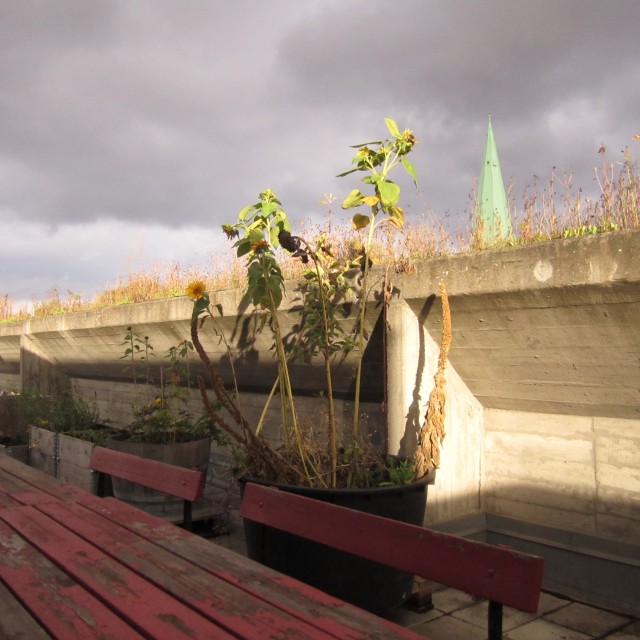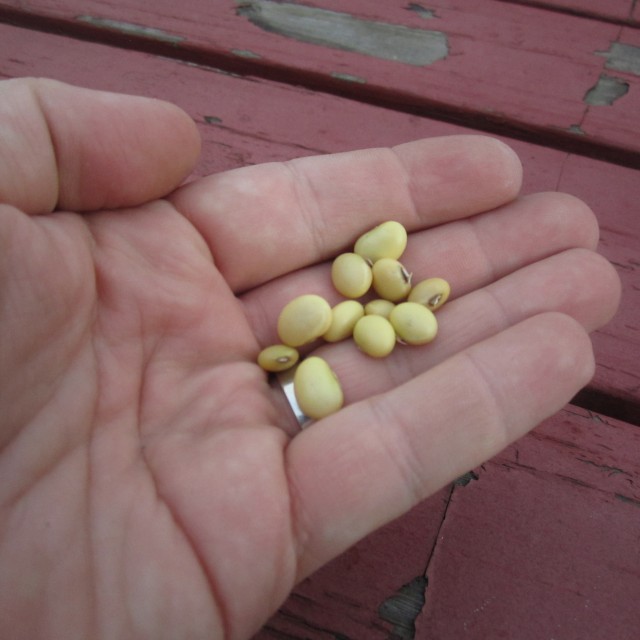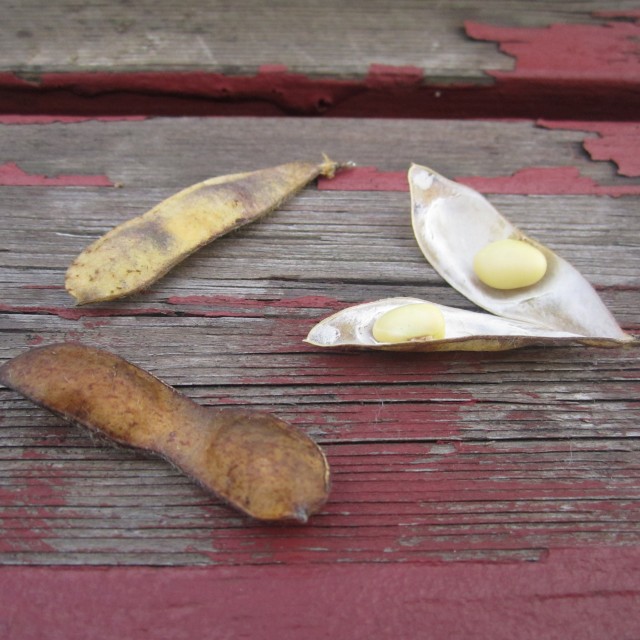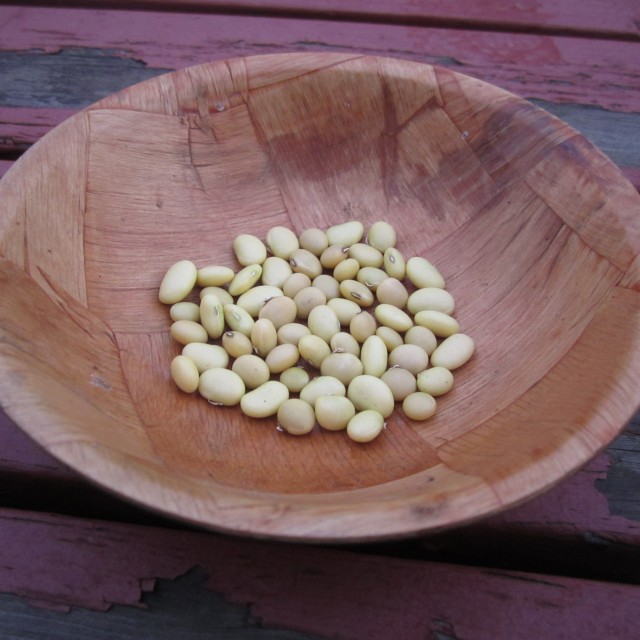Svensk sojabønner / Swedish soybeans
This summer we grew soybeans at Nørrebro’s rooftop garden, DYRK. They were heirloom Swedish soy beans (also known as Glycine Max) named Fiskeby III (there are numerous varieties of Fiskeby) from a seed archive in Russia called the N. I. Vavilov Institute of Plant Industry (designated as VIR on the seed packaging). Brett was making a lot of tofu and it seemed like a natural progression, to go to the source: the soy bean.
We planted the beans in May, 7 in all. They sprouted a few weeks later and 2 supple seedlings were subsequently eaten by pigeons. The good folks at DYRK rigged a cover so that the remaining plants could grow. Through various travels and family commitments, we left the beans pretty much on their own over the grey summer, which has faded into a much greyer Copenhagen fall.
Despite the only intermittent sun, our remaining soy plants did well and produced 50 seeds. But more than the number of seeds, that our tiny plants produced, this agricultural exercise, which sprung from a personal project, led to larger connections. Beyond tofu, our interest in cultivating the soy plant was our first set of steps to understand the plant as a symbol of global agriculture, war, and climate change.
The soy plant is one of the most commonly cultivated plants worldwide. It has long been grown in Asian countries, and came to the attention of the West during World War II, as protein and as a fertilizer. Though it is such a large crop, the majority is not eaten by humans, rather it is processed into animal feed. The soybean makes the current global system of industrial animal agriculture, or factory farming, possible.
What does it mean to take a heirloom seed–grow it and save it-when the typical soy bean plant around the world is a genetically modified, destroyer of soil, bound for the CAFO lot?
Planting these beans and saving the seeds, for us, has been a meditation on scale–a way to physically consider our place in the global food chain. We will plant our seeds next spring, maybe adding a couple of more varieties, and continue our slow investigation of these plants and what they mean. Follow along as this grows into a larger project here on the MQ.
Radio Aktiv Sonic Deep Map (2013)

SUPERKILEN – Extreme Neoliberalism Copenhagen Style

Read Brett's essay about the park.
Download our guide:

This is our guide to how-to books from the counterculture of the 60s and 70s. Click to get the download page.
Categories
- Agriculture (11)
- Animal sounds (1)
- Artist parents (19)
- Arts and culture (106)
- Bees (3)
- Book reviews (14)
- Books (18)
- Critical essays (5)
- Daily Photo (5)
- Design (36)
- Dirt (11)
- Environmental activism (43)
- Exhibitions (24)
- Farms (11)
- Forest (7)
- Friday connect (15)
- Growing (42)
- Habitat (38)
- Homesteading (16)
- Interviews (15)
- Kitchen (14)
- Living structure (9)
- MISC (15)
- Mythological (2)
- Neighborhood (83)
- Ocean News (1)
- Our Art Work (21)
- Personal – Design/Art (3)
- Play (2)
- Playground (4)
- Projects (21)
- Public space (53)
- Resilience (13)
- Sea Side (2)
- Sojabønner (2)
- Tofu (8)
- Vermont correspondence (7)
- Water (3)
- Wednesday picture (31)
- Workshop (1)
Video interview:

Watch our interview of SeedBroadcast, a mobile project that is part seed library and part seed-saving-story-collecting machine-recording the stories of seed saving, farming, and food sovereignty work being done around the US.

Download a poster Bonnie made about biodiversity in a vacant lot in the Amager borough of Copenhagen, in collaboration with biologist, Inger Kærgaard, ornithologist, Jørn Lennart Larsen and botanist, Camilla Sønderberg Brok: A BRIEF TAXONOMY OF A LOT

We made and installed a network of bat houses in Urbana, Illinois, to support the local and regional bat population, but also to begin a conversation about re-making the built environment.
READ MORE
BOOK REVIEW:

We write often about artists and art groups that work with putting ‘culture’ back in agriculture. Here is a new favorite: myvillages, a group of three women based in Germany, the Netherlands, and the UK. Read more...

Post Revolutionary Exercises
We really admire the dedicated hard work of Kultivator who seeks to fuse agriculture and art in their work. Click this sentence to get a PDF of their poster collection called "Post Revolutionary Exercises."

Cultural Practices Within And Across
This amazing book networks urban and rural resilience and sustainability projects around the world. Deeply inspiring projects in Romania, Paris, San Francisco, and elsewhere.
• Read our review of the book.
• Buy the book.
• Download the book.











